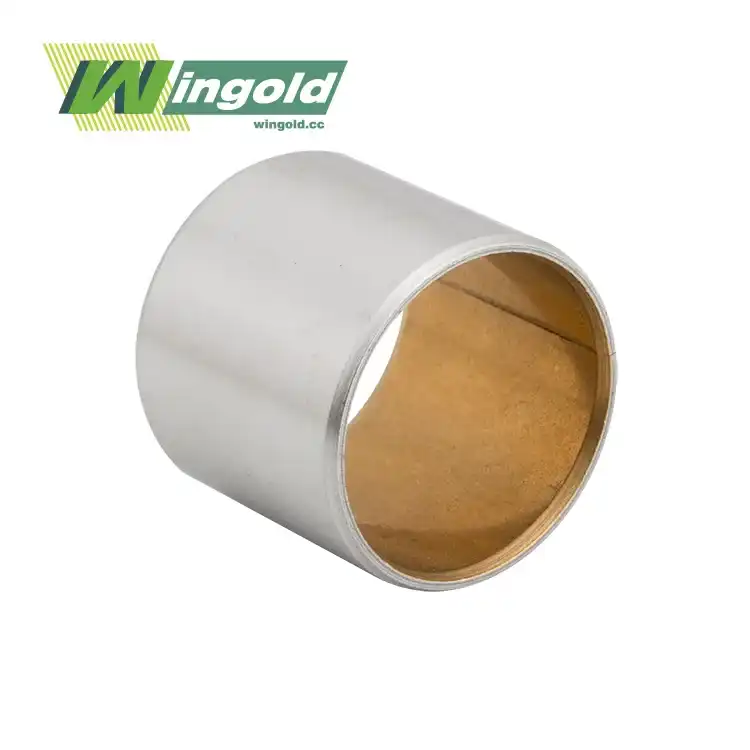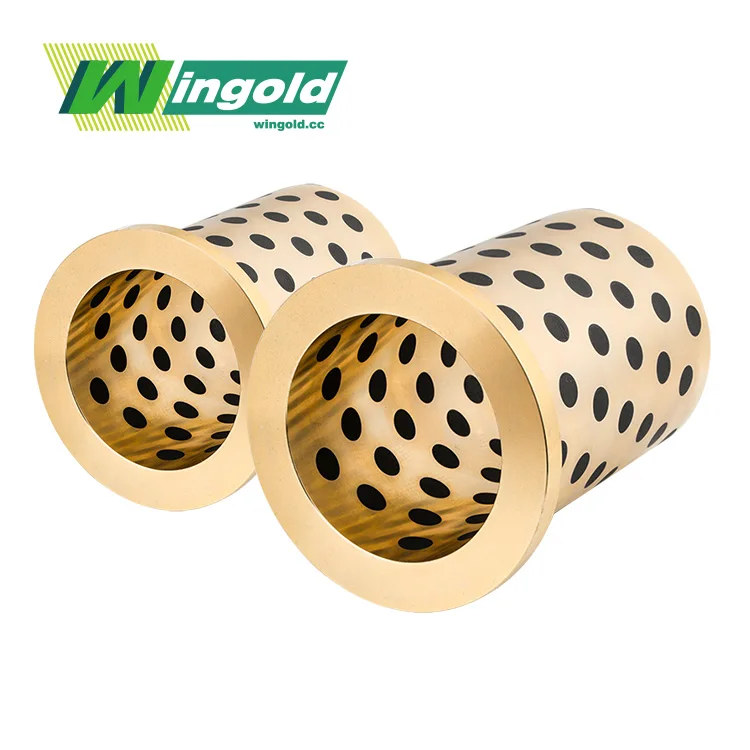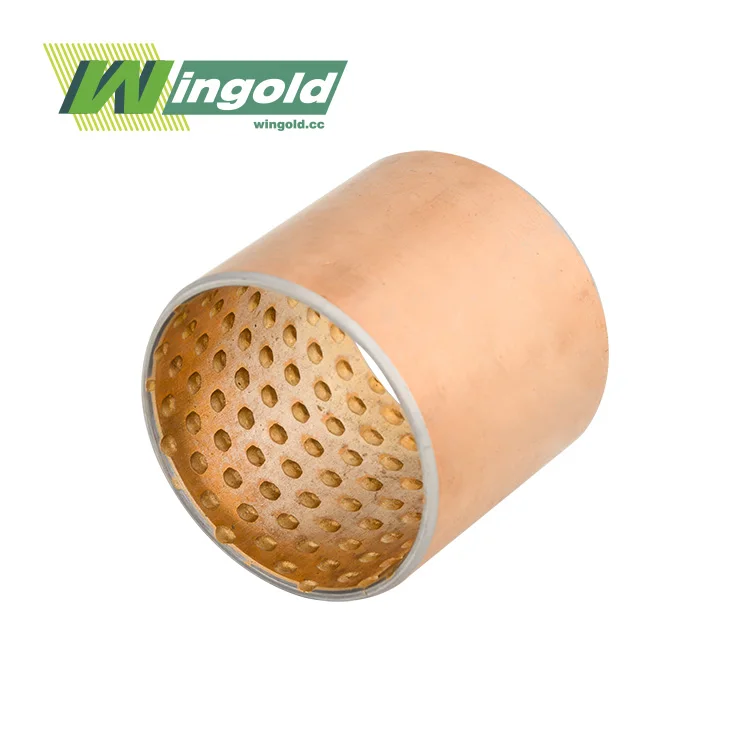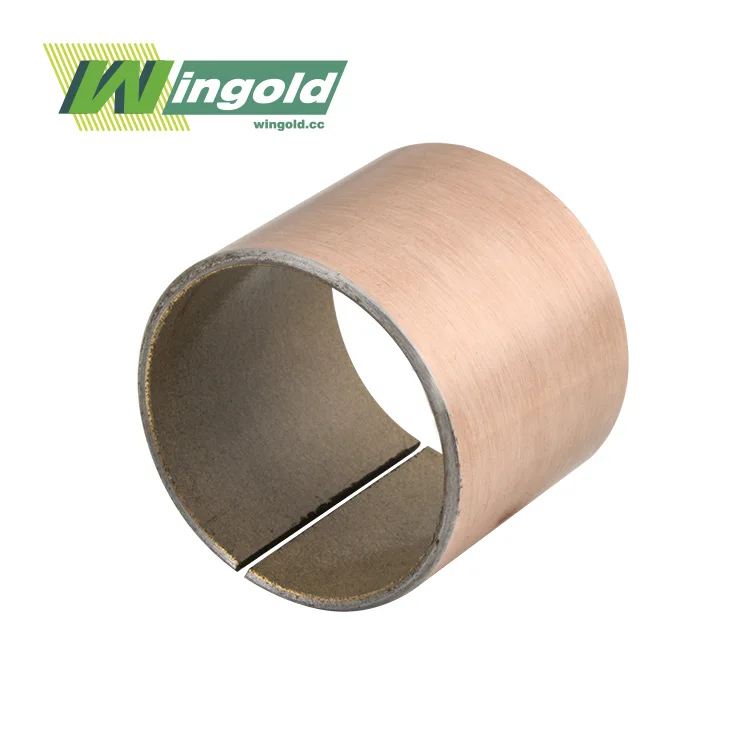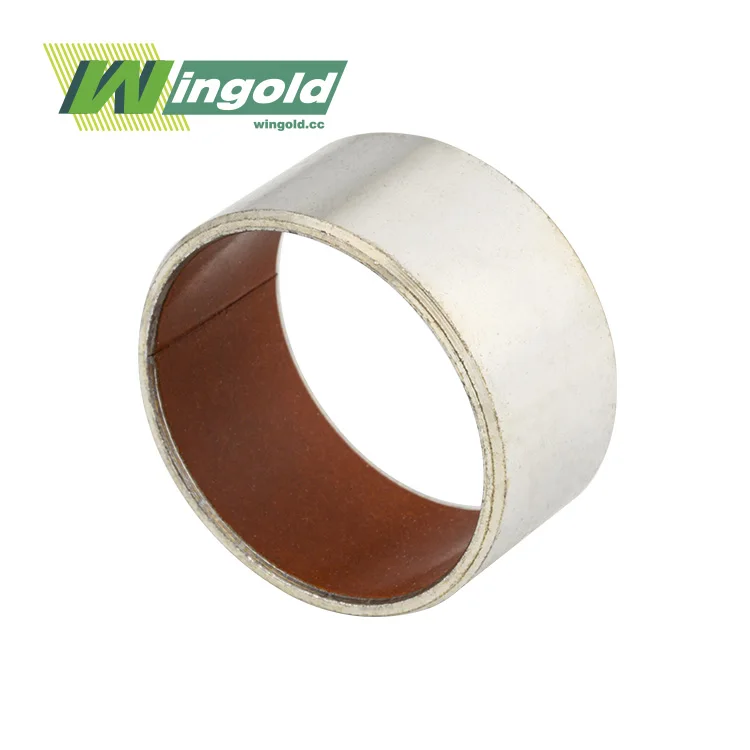Understanding Bimetallic Bushing Materials
Composition and Structure
Bimetallic bushing materials are engineered to provide exceptional performance in demanding industrial applications. These bushings typically consist of a strong steel backing for structural integrity and a specialized alloy lining that offers superior tribological properties. The steel backing provides the necessary strength and heat dissipation, while the alloy lining, often composed of bronze or copper-based materials, delivers excellent friction and wear characteristics.
Advanced bimetallic bushing materials, such as those offered by Wingold Bearing, may include copper alloys with low friction characteristics like CuPb10Sn10, CuPb6Sn6Zn3, CuPb24Sn4, CuPb30, AlSn20Cu, or CuSn8Ni. These alloys are sintered onto high-quality low-carbon steel, creating a wear-resistant layer that can withstand harsh operating conditions.
Key Properties
Bimetallic bushing materials boast an array of desirable properties that make them ideal for various machinery applications:
- High load-bearing capacity: Capable of supporting loads up to 250 MPa
- Low friction coefficients: Ranging from 0.02 to 0.08
- Excellent wear resistance: Prolonging the lifespan of machinery components
- Superior thermal conductivity: Efficient heat dissipation
- Corrosion resistance: Protection against harsh environments
- Self-lubricating properties: Reduced maintenance requirements
These properties contribute to the overall performance and durability of bimetallic bushings, making them a popular choice across various industries.
Factors Influencing Bimetallic Bushing Material Selection
Operating Conditions
When selecting a bimetallic bushing material, it's essential to consider the specific operating conditions of your machinery. Factors such as temperature, speed, and load play a significant role in determining the most suitable material.
- Temperature: Bimetallic bushings can operate within a wide temperature range, typically from -40°C to 280°C. However, different alloy combinations may perform better at specific temperature ranges. For high-temperature applications, materials with higher thermal stability should be chosen.
- Speed: The rotational or linear speed of the machinery affects the friction and wear characteristics of the bushing. Higher speeds may require materials with lower friction coefficients and better heat dissipation properties.
- Load: The load-bearing capacity of bimetallic bushings can vary significantly. For heavy-duty applications, materials with higher compressive strength and fatigue resistance should be selected.
Environmental Factors
The environment in which the machinery operates can significantly impact the performance and longevity of bimetallic bushings. Consider the following environmental factors when choosing a bushing material:
- Corrosive environments: In industries such as chemical processing or marine applications, corrosion resistance is paramount. Select materials with enhanced corrosion-resistant properties to ensure longevity.
- Contamination: In dusty or particle-laden environments, bushings may be exposed to abrasive contaminants. Choose materials with good embeddability to minimize wear and extend service life.
- Lubrication availability: Some bimetallic bushing materials offer self-lubricating properties, making them suitable for applications where continuous lubrication is challenging or impossible. These materials are particularly valuable in hard-to-reach areas or in machinery with infrequent maintenance schedules.
Industry-Specific Requirements
Different industries may have unique requirements for bimetallic bushing materials. For example:
- Automotive industry: Bushings used in automotive applications often require materials with high load-bearing capacity, low friction, and excellent wear resistance to withstand the rigors of constant use and varying environmental conditions.
- Aerospace: In aerospace applications, lightweight materials with high strength-to-weight ratios are preferred. Bimetallic bushings for this industry must also meet stringent safety and performance standards.
- Heavy machinery: Construction and mining equipment often require bushings that can withstand extreme loads, shock, and vibration. Materials with high compressive strength and impact resistance are essential for these applications.
Optimizing Bimetallic Bushing Performance
Surface Treatment and Coatings
To further enhance the performance of bimetallic bushings, various surface treatments and coatings can be applied. These treatments can improve wear resistance, reduce friction, and increase corrosion protection. Some common surface treatments include:
- PTFE overlay: A thin layer of polytetrafluoroethylene (PTFE) can be applied to the bushing surface to provide excellent low-friction properties and enhanced chemical resistance.
- Hard chrome plating: This treatment can significantly increase the surface hardness of the bushing, improving wear resistance and extending service life.
- Nitriding: A process that introduces nitrogen into the surface layer of the steel backing, increasing hardness and wear resistance.
Customization Options
Bimetallic bushing materials can be customized to meet specific application requirements. Manufacturers like Wingold Bearing offer a range of customization options, including:
- Oil groove patterns: The surface of the copper alloy can be processed to include various types of oil grooves, oil holes, and pockets. These features help distribute lubricant evenly and improve overall performance.
- Size and shape: Bimetallic bushings can be manufactured in a wide range of sizes and shapes to fit specific machinery requirements. Inner diameters typically range from 10mm to 500mm, with wall thicknesses from 1mm to 50mm and lengths up to 1000mm.
- Alloy composition: The specific alloy composition of the bearing layer can be tailored to optimize performance for particular operating conditions or industry requirements.
Quality Control and Testing
To ensure the reliability and performance of bimetallic bushing materials, rigorous quality control measures and testing procedures are essential. Reputable manufacturers employ various testing methods, including:
- Friction coefficient testing: This helps determine the material's ability to reduce friction and wear in specific operating conditions.
- Life acceleration testing: Simulates long-term use to assess the durability and longevity of the bushing material.
- Bonding strength tests: Ensures that the alloy layer is securely bonded to the steel backing, preventing delamination during operation.
- Compliance testing: Verifies that the bimetallic bushing materials meet industry standards such as ISO 4383 and ASTM B22.
Conclusion
Choosing the right bimetallic bushing material is a critical decision that can significantly impact the performance, efficiency, and longevity of your machinery. By considering factors such as operating conditions, environmental factors, and industry-specific requirements, you can select a material that optimizes your equipment's performance while minimizing maintenance costs.
Wingold Bearing offers a wide range of high-quality bimetallic bushing materials designed to meet the diverse needs of various industries. Our expertise in material research and development, coupled with our state-of-the-art manufacturing capabilities, ensures that we can provide customized solutions tailored to your specific requirements. For more information about our bimetallic bushing materials or to discuss your specific application needs, please contact us at info@wingold.cc.
FAQ
What are the main advantages of using bimetallic bushing materials?
Bimetallic bushing materials offer high load-bearing capacity, low friction, excellent wear resistance, superior thermal conductivity, corrosion resistance, and self-lubricating properties.
How do I choose the right bimetallic bushing material for my application?
Consider factors such as operating conditions (temperature, speed, load), environmental factors, and industry-specific requirements. Consult with a reputable manufacturer like Wingold Bearing for expert guidance.
Can bimetallic bushings be customized for specific applications?
Yes, bimetallic bushings can be customized in terms of size, shape, alloy composition, and surface treatments to meet specific application requirements.
What industries commonly use bimetallic bushing materials?
Bimetallic bushings are widely used in industries such as automotive, aerospace, heavy machinery, hydraulic and pneumatic systems, textile machinery, and many others.
